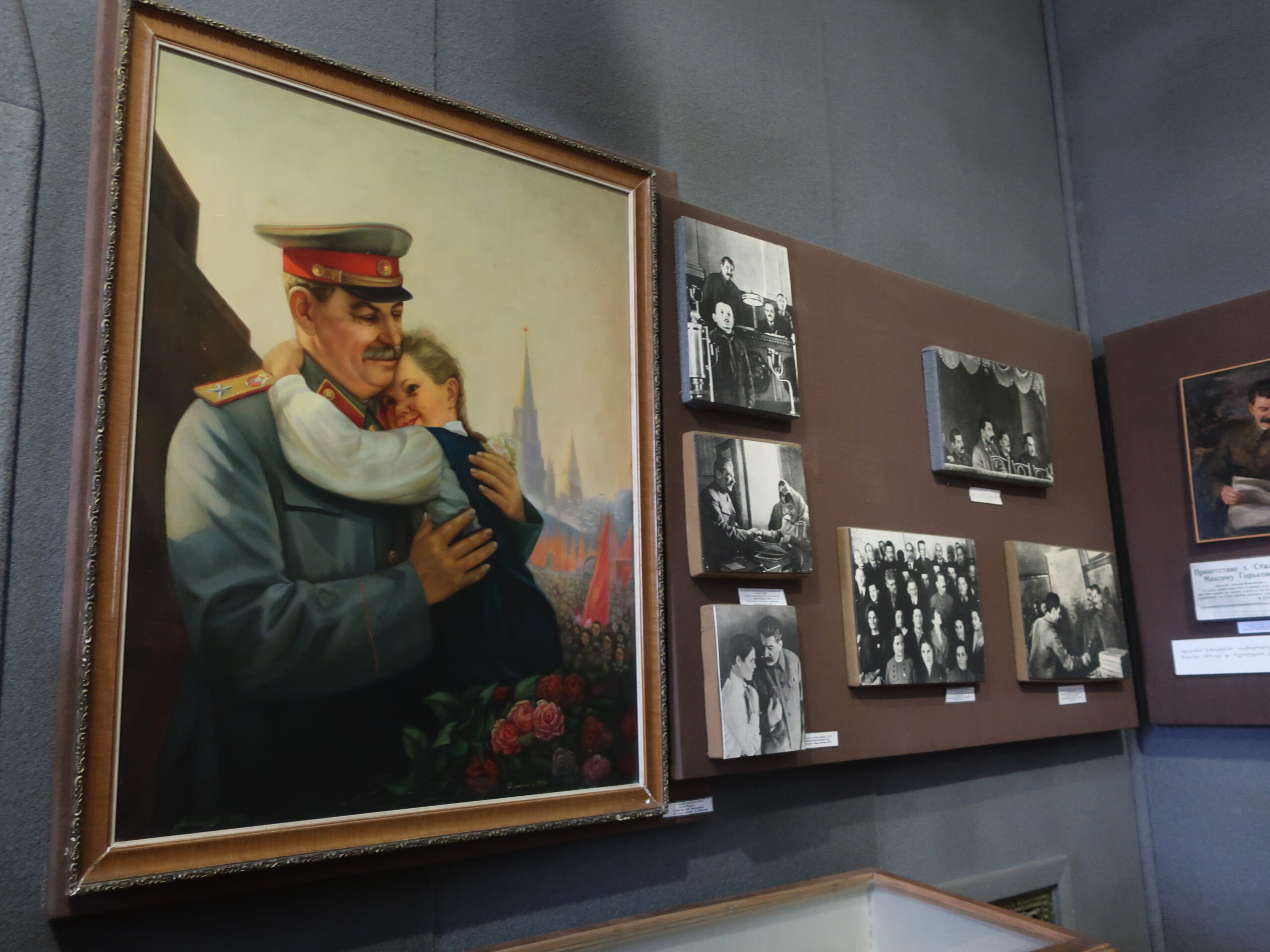Table of Contents
Travel in Georgia] (21) To Gori, Stalin's Birthplace - Feel the Atmosphere of the Former Soviet Union at the Stalin Museum
I told you in my last article that I came to Georgia to study Tolstoy.
However, if I had come all the way to Georgia, there was one place I really wanted to go.
That was the town of Gori, Stalin's birthplace.
We have written various articles on the Soviet Union on our blog. Among them, we have written about Stalin in particular.Learning from Stalin."He also uploaded a series of articles called
And as I studied Stalin's life, I developed a strong interest in his birthplace, Gori.
Let's take a look at his birthplace, Gori, and see what kind of place it was.
Stalin's birthplace, Gori.
Soso (*Stalin, blog author's note) was a typical Gori boy. The inhabitants of Gori were notorious throughout Georgia as "matrabajis" (big-robber, violent scoundrels).
Gori was one of the last towns to continue the "picturesque and barbaric custom". It was a free-for-all street brawl, with special rules, but no holds barred. All the bawling, praying and fighting were interconnected, with drunken monks acting as arbitrators. Gori's tavern was a stewpot of unruly violence and crime.
Russian and Georgian administrative authorities attempted to ban this dubious sport, which began as military training in the days when medieval Georgia was constantly at war.
Despite the presence of a Russian military barracks, the "Bristav" (local police chief) Davlicevi and his handful of officers could do little to deal with the situation - no one could quell Gori's unruly and lawless conditions.
In the midst of the fistfight, the horses galloped off, and it was not surprising that the carriage ran over the children on the street.
Psychohistorians blame much of Stalin's development on his drunken father. But this culture of street brawling was a formative factor as well.
Hakusuisha, Simon Seberg Montefiori, translated by Yukishige MatsumotoStalin: The Age of Youth and Revolution.p85-86
*some line breaks.
The town of Gori is just so intense. As we will see in the commentary that follows, this town was a den of tremendous ruffians.
Soso's father was a poor shoemaker, a man who was drunk and violent toward him. This violence by his father is often credited with defining Stalin's life, but the author points out that environmental factors such as Gori also played a powerful role.
Street brawls, wrestling tournaments, and school-student brawls were the three major traditions of Gori competition.
The men of every household, down to the children, would parade through the town drinking wine and singing until nightfall. It was then that the real fun began.
This "freestyle boxing match" - "crivi" - was a "group confrontation with rules. First the three-year-old boys wrestled with the other three-year-old boys.
Next came the children fighting. Next came the teenage boys, and finally the grown men would engage in an "unbelievable brawl. By then, the town was completely out of control. The situation carried over to the next day - even in the schools, where class fought class. Stores were often looted.
A popular sport in Gori was the Georgian wrestling or "chidaoba" match between strongmen. The matches somewhat resembled the Old Testament story of Goliath. The matches were held in a specially elevated ring to the accompaniment of "zurna. It was a contest in which the winner was judged solely on the basis of his or her ability, regardless of rank, wealth, religion, or ethnicity.
Wealthy aristocrats like the local landowner, Marquis Amirahvari, merchants, and even individual villages allowed their own powerful players to compete. These strongmen were so respected that the title "paravani" was used when speaking to them.
Stalin's surrogate father Egnatashvili himself was one of the three powerful brothers. Now that he was older and richer, "Paravani" Egnatashvili had his own strongmen competing. Even in his old age, Stalin was still boasting about his father's martial arts victories.
Hakusuisha, Simon Seberg Montefiori, translated by Yukishige Matsumoto, Stalin: Youth and the Age of Revolution, P87-88
*some line breaks.
It was a world unimaginable to those of us living in modern Japan, where brawls between small children and adults of all ages were a tradition in the town.
What is important here is that the town had a value system in which "merit is the only thing that counts, regardless of nobility, wealth, religion, or ethnicity," and a mentality of pursuing strength was especially sought after in this town.
It is not difficult to imagine that the character of a person raised in such an environment would be much different from a person raised in an environment that values order and kindness.
Stalin's surrogate father was mentioned at the end of the passage quoted here, but he was to be separated from the Stalin family because his violent father was too dangerous. However, since it was financially difficult for the mother alone to support the Stalin family, Eknatashvili was supposed to support the Stalin family as a de facto surrogate father.
Incidentally, Stalin's mother, Keke, was famous for her beauty, yet she was a friendly and serious person. And she was an educational mother who doted on Stalin. Keke wanted to make Stalin a priest and gave him an education. But she could never have imagined that Stalin would become an educated man and later a dictator...
Then Stalin went on to the seminary. At the time of the Russian Imperial Court, seminaries were forbidden to read Marxist books as they were revolutionary.
In addition, as a seminary, the school was under strict discipline and was constantly monitored by a strict staff member nicknamed "Black Spot" to ensure that he did not read such books.
Stalin discovered Victor Hugo's novels, especially "1793". Its protagonist, the revolutionary monk Simurdan, would become one of his prototypes. Hugo, however, was strictly forbidden by the seminary teachers.
At night, the "black spot" patrolled the hallways, constantly checking to see if the lights were out, if they were reading, or indulging in other self-defeating vices. As soon as he was gone, the students lit their candles and resumed reading.
Soso was typical: "He read so much that he hardly slept at all, his eyes were shaky and he was pale. When he began to cough," Iremashvili "took the book from his hands and blew out the candles. [omitted)
The young Stalin was even more influenced by Russian writers who created a sensation among radical youth - Nikolai Nekrasov's poetry and Chernyshevsky's novel What to Do.
The latter's protagonist, Rakhmatov, became for Stalin the prototype of the resolutely ascetic revolutionary. Like Rakhmatov, Stalin came to regard himself as a "special man."
Soon after, Stalin was seized "on the steps of the school" while reading another forbidden book, for which he received "extra time in the lockup and a severe reprimand by order of the principal.
He "worshipped Zola." His favorite novel by this Parisian writer was Germinard. He read Schiller, Maupassant, Balzac, and Thackeray's City of Vanity in translation, Plato in the original Greek, and Russian and French history.
He then passed these books around to other students. He adored Gogol, Saltykov-Shchedrin, and Chekhov, and memorized their works. And he "could recite them by heart.
He admired Tolstoy, but was "bored by his Christianity." In later years he would write "ha ha ha" alongside Tolstoy's meditations on redemption and salvation.
I marked a lot of books on one of Dostoevsky's masterpieces, "Evil Spirits," about revolutionary intrigue and treachery.
These books were brought in secretly, tucked under the surplices of the theology students. Stalin later joked that some of these books had to be "taken" (shoplifted) from bookstores for the revolution.
Hakusuisha, Simon Seberg Montefiori, translated by Yukishige Matsumoto, Stalin: Youth and the Age of Revolution, P121-123
*some line breaks.
The young Stalin's fearsome appetite for reading can be seen here. He continued to read even into his later years, and his education was said to rival that of the best cultured people.
And it is interesting to note that this is a book that Stalin was reading.
Chernyshevsky's "What to Do" was also a favorite bible of Lenin. Stalin was likewise greatly influenced by this book.
Hugo's.1793."Zola's.Geluminaire."has been previously mentioned on this blog.
Belief in Marxism leads to a respect for science and rationality. In this aspect, there may have been an affinity with Zola's work. In fact, "Germinal" was a very popular work among Marxists because it is a story of the struggle of oppressed workers.
BalzacandSyrah, ,GogolThe "Stalinist" and "Stalinist" are the royal pattern of the Russian reading public, just as Dostoevsky followed the same path. And the young Stalin and his contemporariesChekhovIt is also interesting to note that he preferred the
He also wrote "ha ha ha" in response to Tolstoy's works, and conversely, he wrote "ha ha ha" in response to Dostoevsky'sevil spiritHe made a lot of marks against the "Stalinist". This point also cannot be overlooked in understanding Stalin.
And Stalin, who was becoming a Marxist revolutionary, dropped out of the seminary and became a gangster.
Finally, he becomes involved in a shooting. As a result, he ends up in a place from which there is no turning back.
The shooting signified the start of a new era in which, as the then well-read nihilist Nechayev's book "The Revolutionary Doctrinal Questions and Answers" put it, "all tender feelings of family, friendship, love, gratitude, and even honor, must be crushed by a single-minded passion for revolutionary activity. It was a start.
A supermoral code that is not bound by judgments of right and wrong - or rather, the absence of the code itself - is termed "conspirazia" (conspiracy) by both sides of the conflict.
It is the "other world" that is vividly depicted in Dostoevsky's novel "Evil Spirits. It is impossible to understand the Soviet Union itself without understanding "Conspirazia" - for Stalin was never disconnected from this world.
Conspirazia" became the dominant spirit of his Soviet state and of his psychological condition.
From then on, Stalin carried his pistol in his belt. Secret police officers and revolutionary terrorists were now professional secret warriors facing off in a duel for the Russian Empire.
Hakusuisha, Simon Seberg Montefiori, translated by Yukishige Matsumoto, Stalin: Youth and the Age of Revolution, P155-156
Some line breaks have been made.
It was precisely because Dostoevsky took this danger of Necheyev seriously that he wrote "Evil Spirits" to warn the world.
Dostoevsky depicts with surprising realism how such revolutionaries and terrorists are propelled into the underworld.
But Stalin found himself there, and rather than detest it, he used it to feed himself.
It was here that the connection between Dostoevsky and Stalin and the Soviet use of Dostoevsky's ideology originated. This Soviet-style Dostoevsky was written by KudryavtsevRevolution or God: Dostoevsky's Worldview."It can be clearly seen in the
Dostoevsky, who believed in the Russian Orthodox Church and criticized revolutionaries, came to be treated as the complete opposite during the Soviet era. He became an atheist and a revolutionary who wanted to overthrow the dynasty. The Soviet interpretation of Dostoevsky is the complete opposite of what he was when he lived. The ideological use of Dostoevsky in this area is also significant when considering the Soviet Union.
This is a bit of a digression, but I hope it has given you some idea of the influence that the town of Gori, where Stalin was born and raised, had on him.
This is why I became so interested in this town of Gori.
Mtskheta, the ancient capital of Georgia, a stopover on the way from Tbilisi to Gori
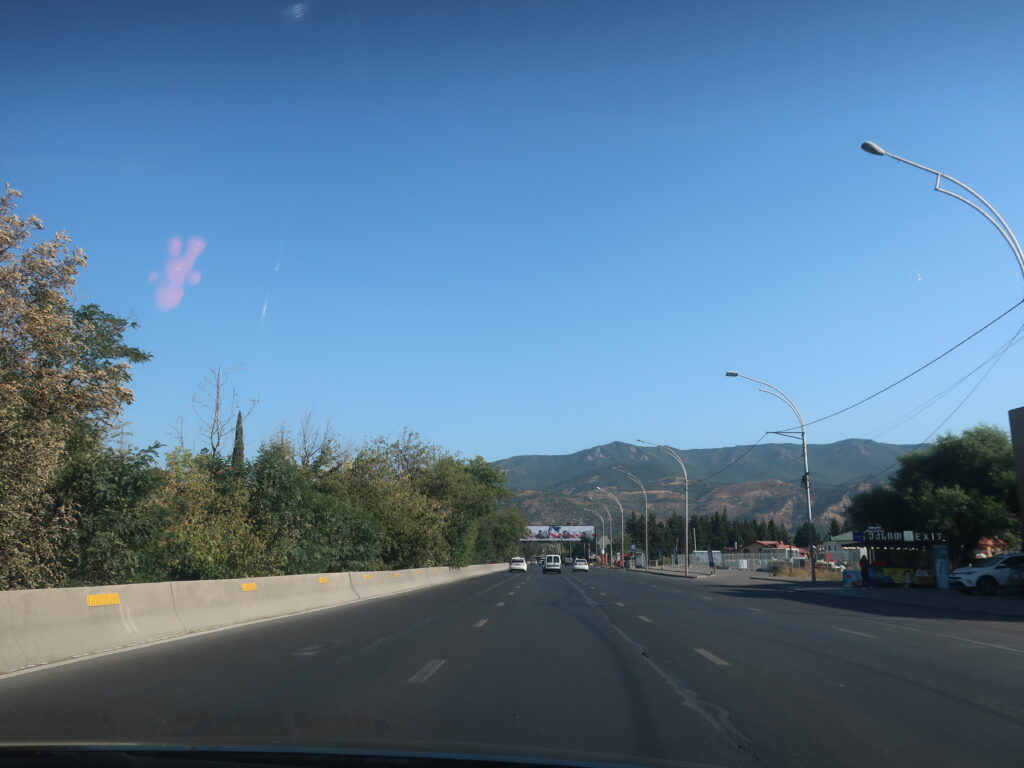
From Tbilisi, take the highway to Gori.
This highway was also built as a result of the change of government in 2004. Expressways are essential for economic growth. However, at the beginning of the construction, it was criticized by the public, who asked, "Do you want us to eat asphalt?
That being said, Georgia was much poorer then than it is now, and the old Soviet way of thinking was still very much in place. That is why the idea was that instead of spending money on roads, living expenses should be provided first.
But nowadays, the people of Georgia understand the benefits of the highway and are happy about it. Before this road was built, they say, the roads were full of potholes and very dangerous, and it was just very difficult to move from city to city. But that was the norm in the days of the former Soviet Union. Even if it is extremely inconvenient, it is difficult to change it if it was the norm. It is somewhat understandable why there was so much criticism of the construction of the expressway.
These circumstances also made me aware of the difficulty of the transition from communism to capitalism.
On the way to Gori, we stopped in Mtskheta, Georgia's famous ancient capital.
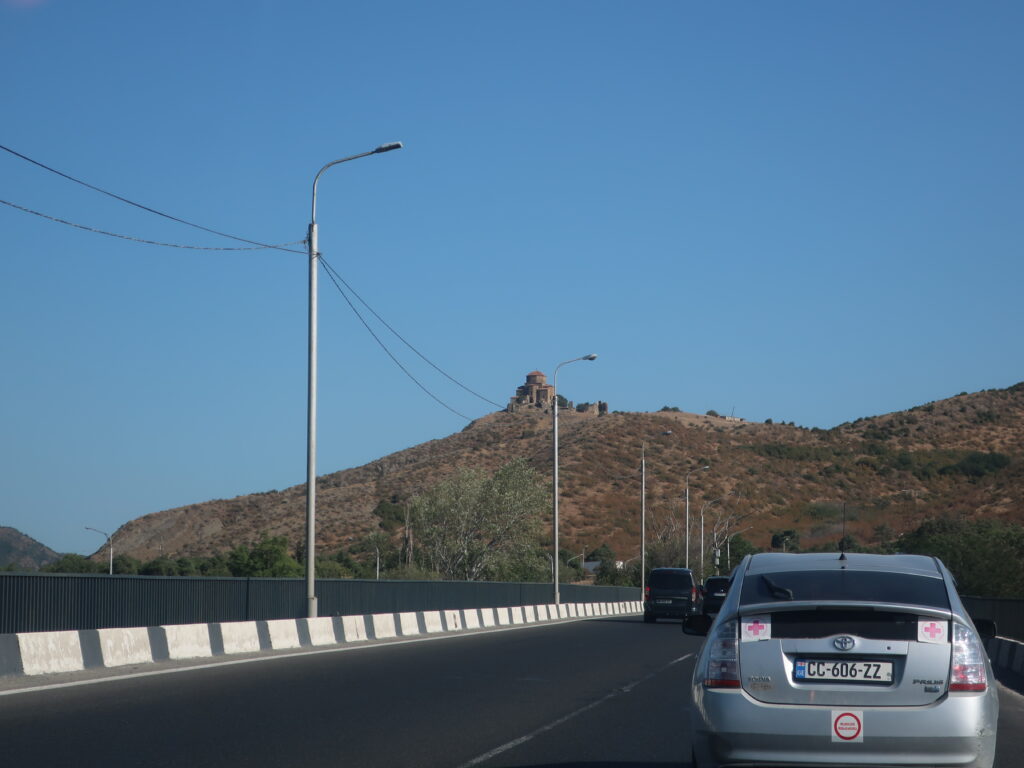
First, I visited the Cathedral of Jyvari, which stands at the top of a small mountain. The way it stood alone on top of the mountain reminded me of a pilgrimage on Shikoku Island.
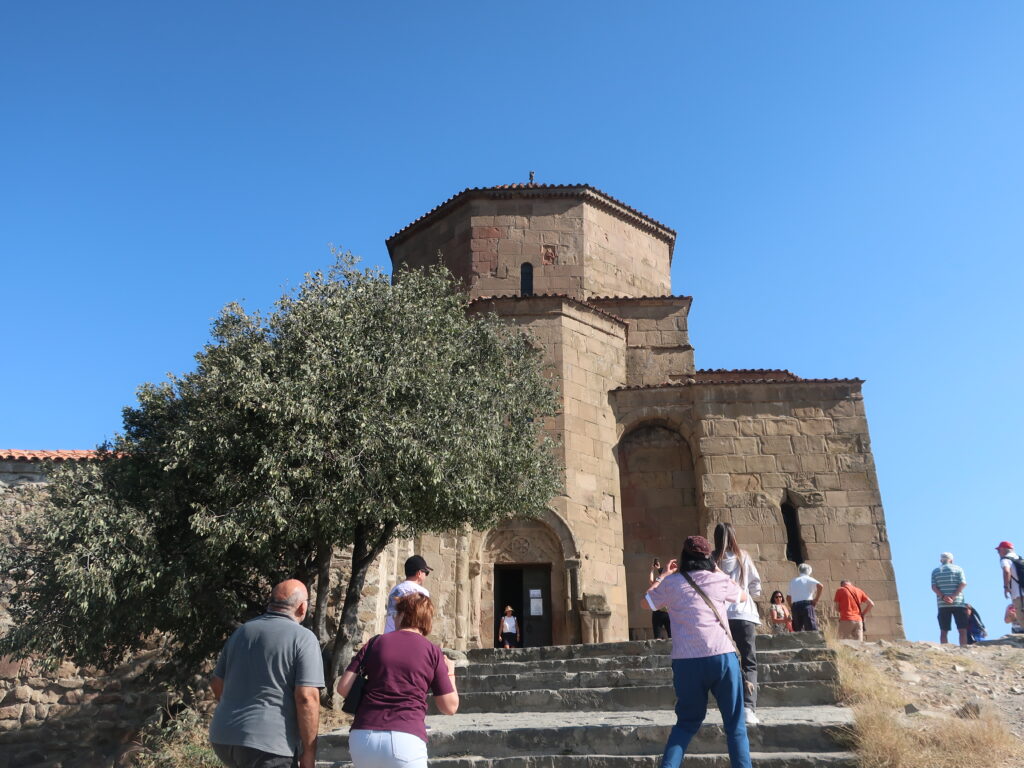
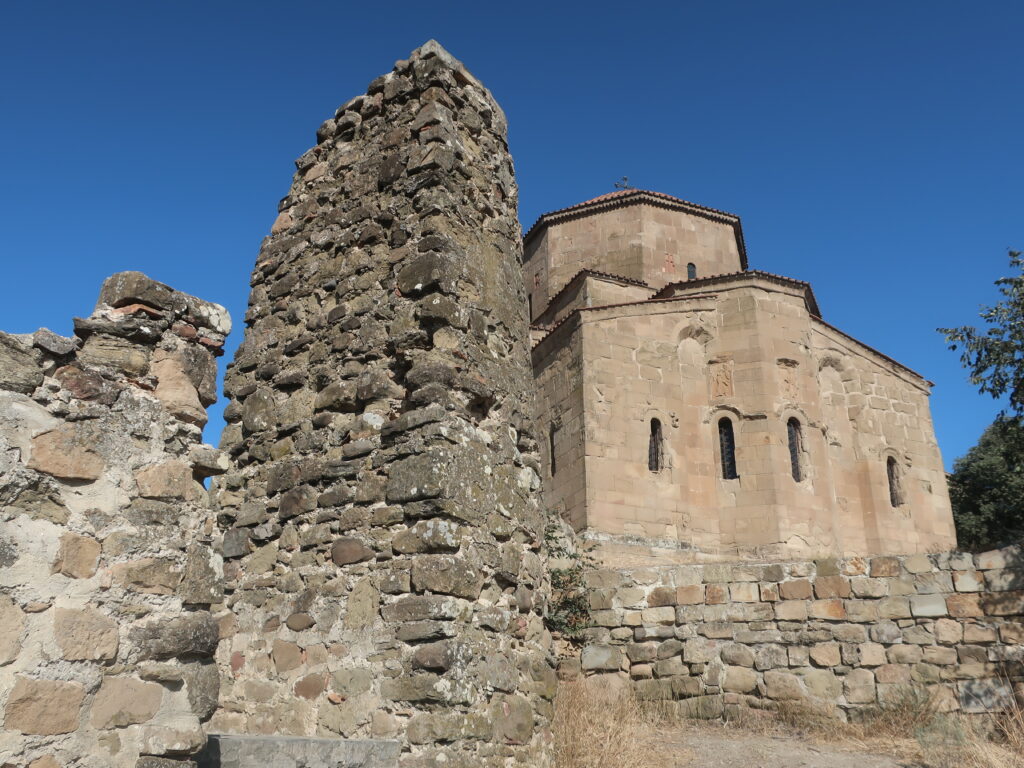
The reason why this church stands alone on top of the mountain is because churches used to serve as fortresses in Georgia. When war broke out, the inhabitants would take refuge in the church on top of the mountain to fortify their defense. That is why the church was built on the top of the mountain, where it was easy to see and easy to defend, and the wall like a castle wall remains around it.
Of course, that is not the only reason why there is a church on top of a mountain. The world below is a secular world where people live. The church was built on top of the mountain to get away from the mundane world where people live and to devote themselves to prayer.
The church as a practical fortress and as a place of religious prayer. The Georgian church was built on the mountain in this way for these two main reasons.
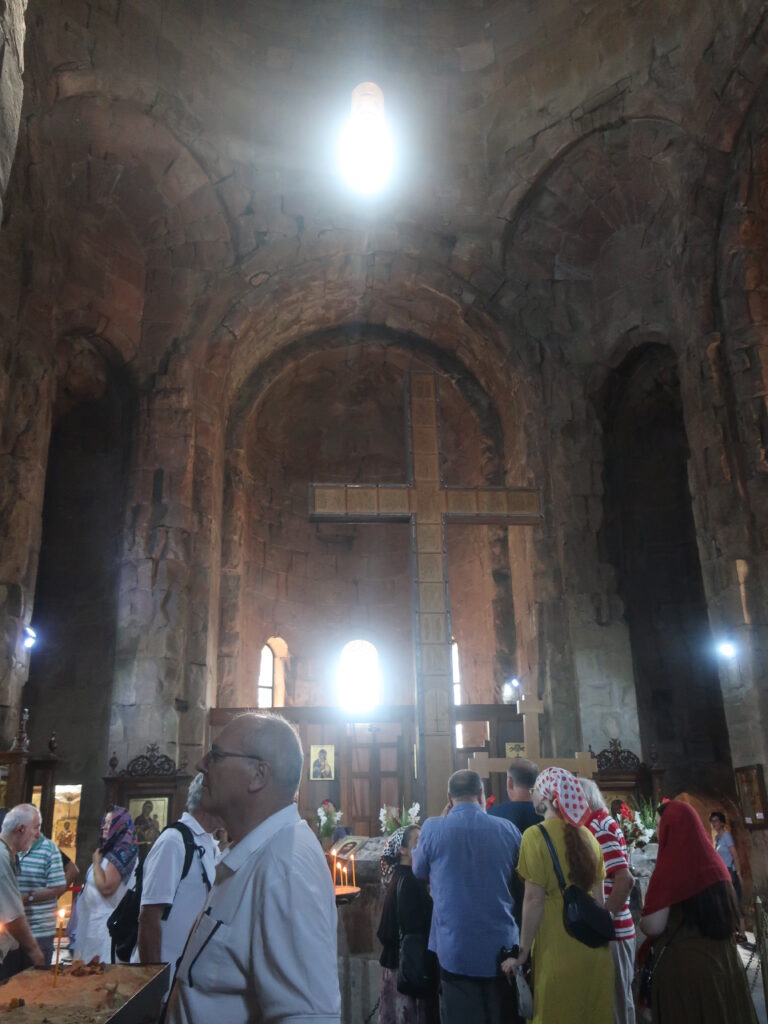
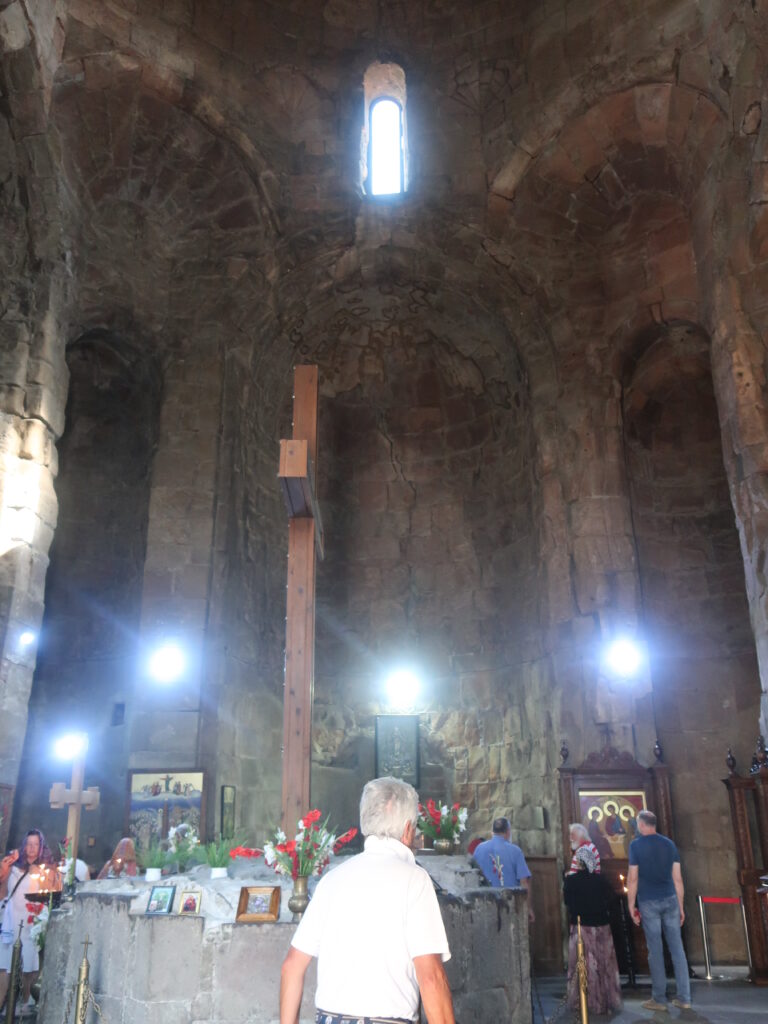
Inside, the walls and pillars were made by huge rocks. This gives it a solid and massive feeling.
And as I felt in Tbilisi, I still sense some kind of spiritual atmosphere. The atmosphere of a place of prayer is strong. I intuitively know that I am in a religious space, a sacred space.
Georgia...something is different here. Within a few days of my arrival, I began to be attracted to this country.
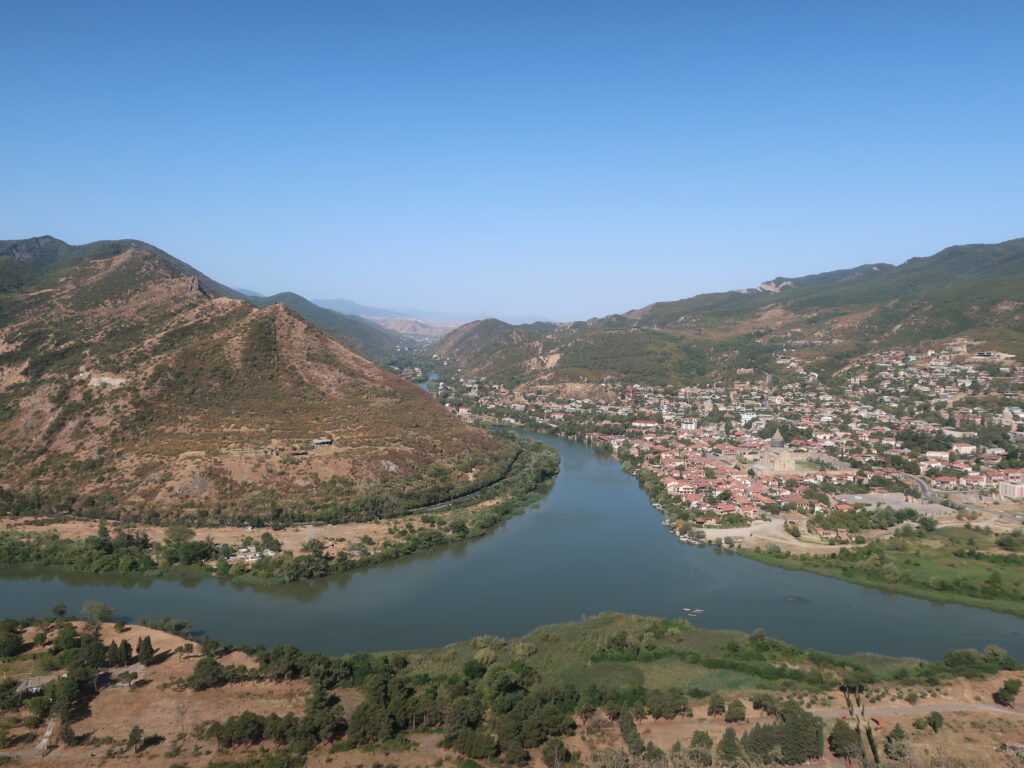
The church offers a view that is known as one of the highlights of Georgia tourism. It is a spot where the river crosses and the beautiful mountains of Georgia can be admired.
And it was here that I heard an interesting story from my guide.
Georgia was originally a region with strong goddess beliefs. Then, early Christians came there in the first century to proselytize. However, Christianity was not accepted by the people of Georgia because it is the religion of God the Father.
But things changed when a fourth-century woman named St. Nino visited the area.
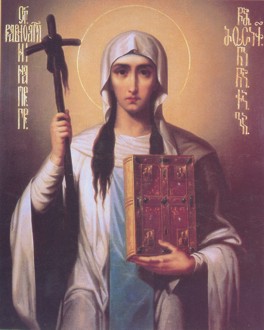
St. Nino preached the teachings of the Virgin Mary, not God the Father. He also preached Jesus as the light that saves the world. It is said that this teaching of salvation by the Virgin and Child matched the belief in the Goddess and was accepted by the people of Georgia. Of course, the miracles that occurred during St. Nino's missionary work in the area, such as thunderstorms, healing of illnesses, and eclipses, were also major factors in the spread of her teachings.
However, this is a very interesting example of how indigenous religions and Christianity can be linked. This may be connected to the Japanese belief in Kannon, the Goddess of Mercy. I would like to look into this at some point.
And in Mtskheta there is another interesting church.
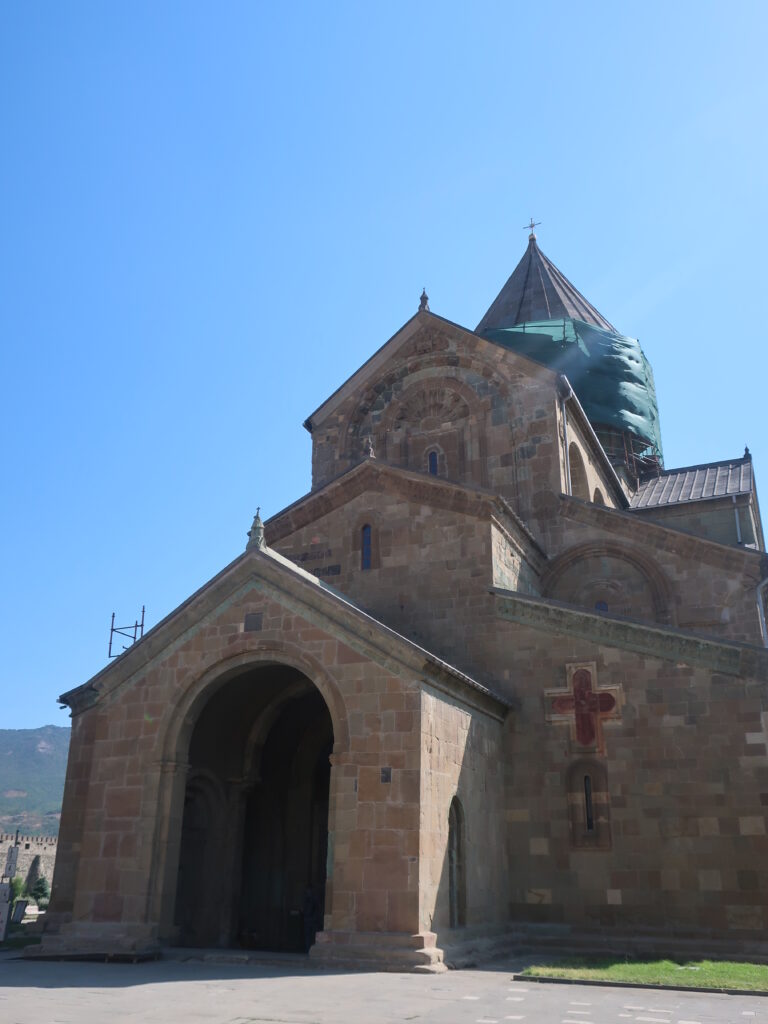
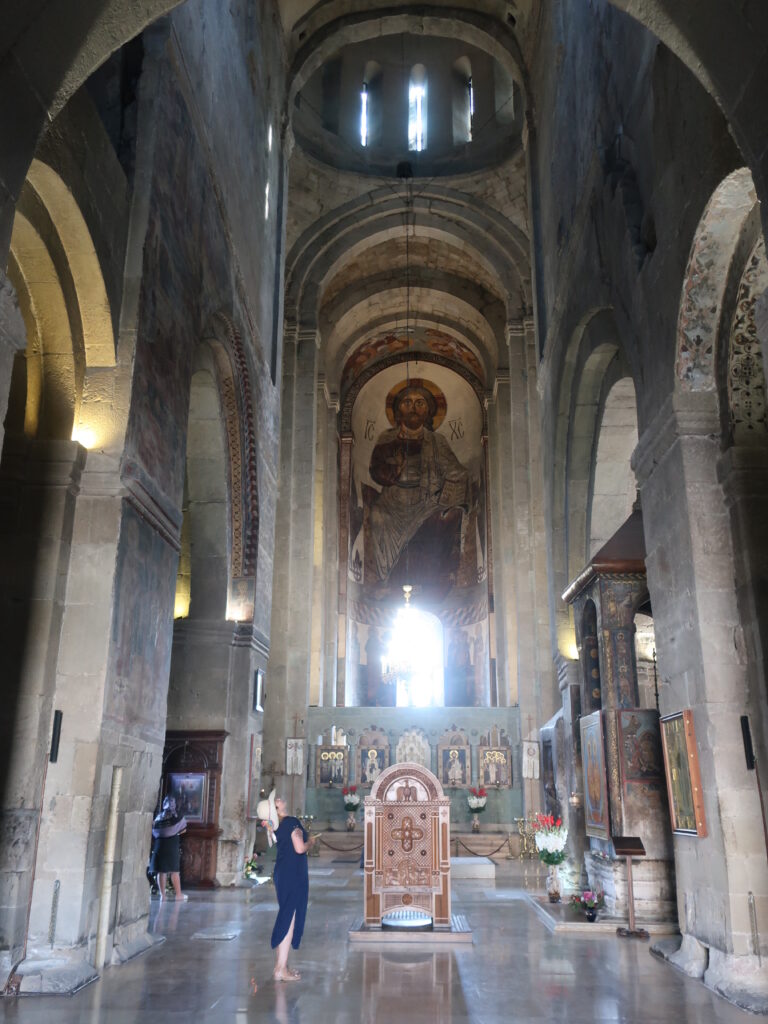
This is the Sveti Tshoveli Cathedral, a building that was the largest church in Georgia until the Zioni Cathedral in Tbilisi was built.
It is built in a style unique in Georgian Orthodox church architecture, and inside there are even more unusual frescoes.
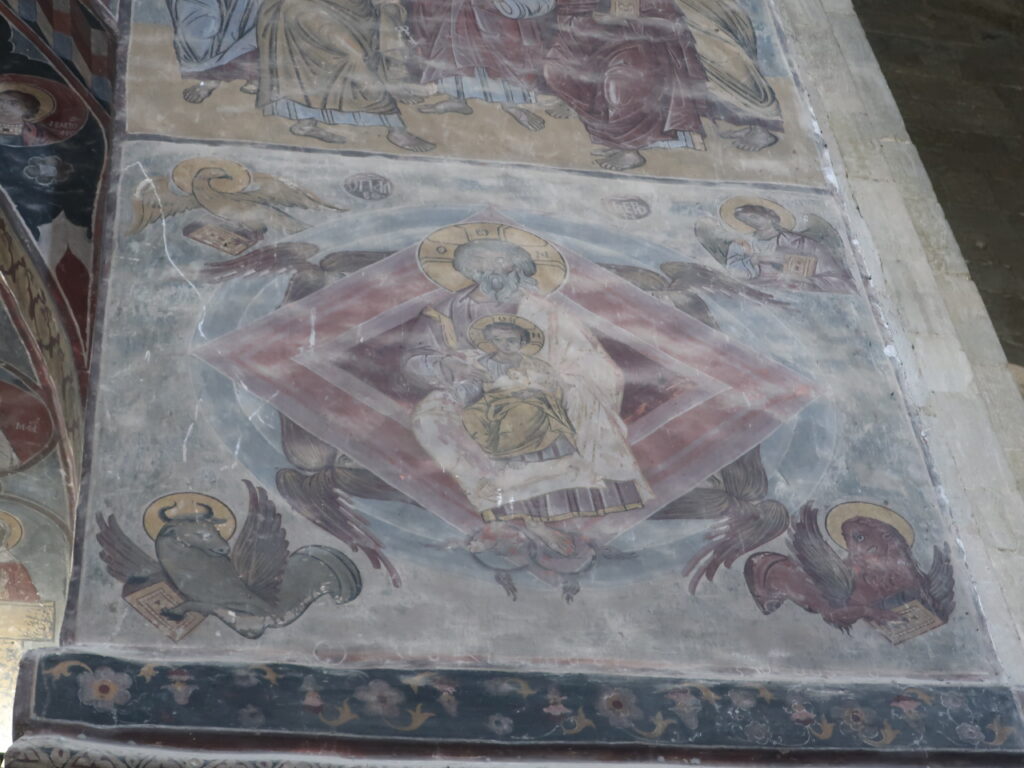
The frescoes of the "Holy Father and Child," not the "Madonna and Child," are painted here.
This is rare. I had never seen it before. This is rare even among Georgian Orthodox Christians, and I wonder if the ancient city of Mtskheta has a unique sense of mixing early Christianity and indigenous religion. This was a good thing I saw.
On the Road to Gori, Consider the Military Conflict with Russia in Ossetia
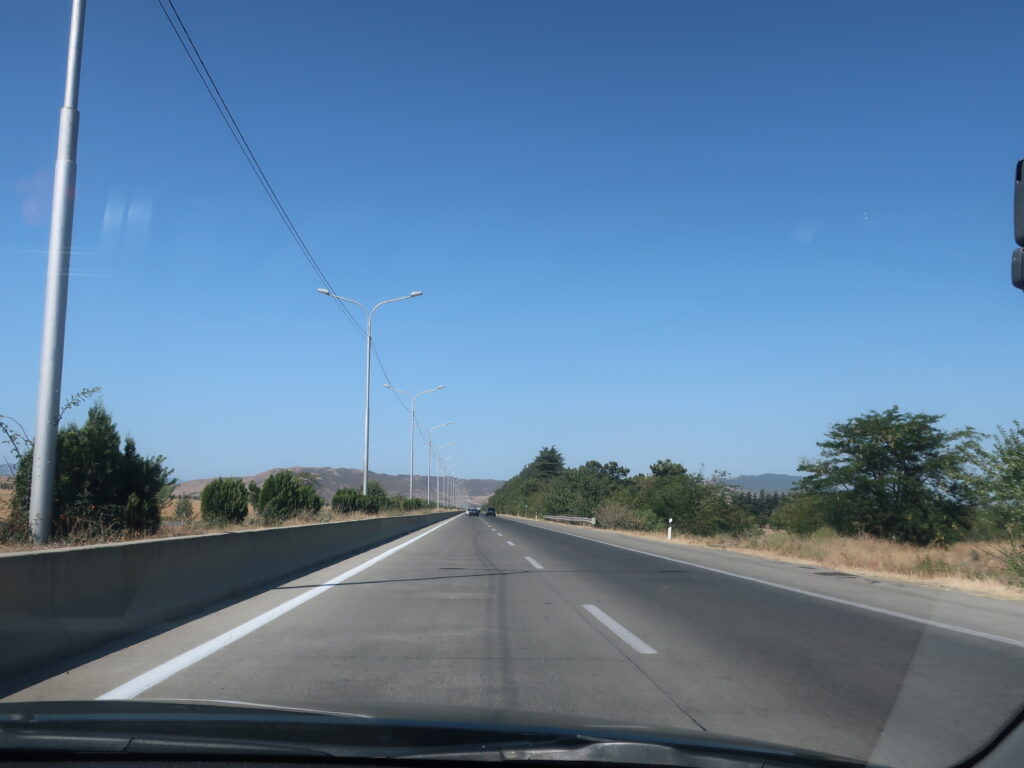
Now we will head to Gori. From Mtskheta, it is about 40 minutes by highway.
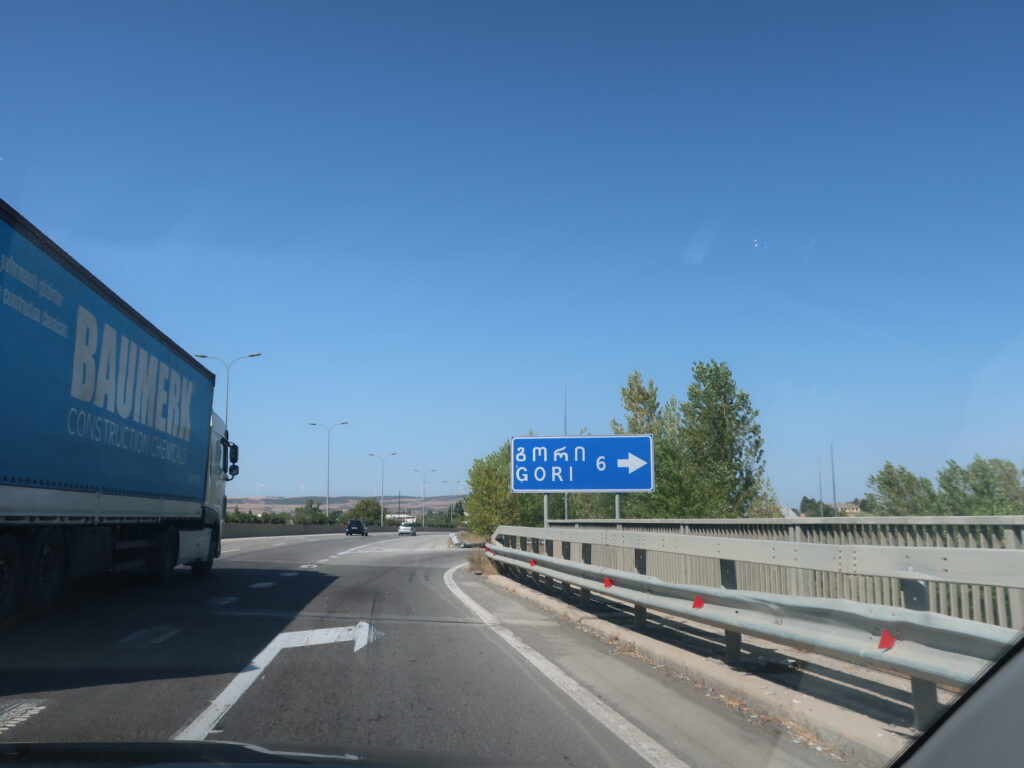
Now, we will soon arrive at Gori.
I was able to visit the town of Gori without any problems this time, but the fact is that right next to this town is Ossetia, an area that is effectively under Russian military control. I was worried that another conflict might break out and this area might become a danger zone at any moment.
According to our guide, the border is still gradually moving toward Georgia. The Caucasus Mountains, where I will be heading later, also have a border with Russia. However, it is difficult to invade there due to road problems, and if Russia were to invade next, the area around Gori would be most at risk. Therefore, the Georgian army is always on the lookout for Russian troops in the Gori area.
Moreover, there are still kidnappings near this border line, and they are still being killed and returned. The Russians say they died by accident, but there were obvious signs of beatings.
An old man who was recently separated from his family after they were told that they had been separated from him because they were suddenly invaded and told, "From today, this is Russian territory, so you need to issue me a passport.
The story was a graphic example of the military confrontation with Russia.
It is true that the guide often mentions the word "war" when talking about Georgia's history. But they are not referring to World War II, but to the 2008 war with Russia.
Georgia was not a battleground during World War II.
But the rate at which they were taken for conscripts and killed in action was one of the highest in the Soviet bloc. In other words, it was Georgians who were used as suicide attackers by the Soviet Army. For more information on Soviet manpower tactics and suicide attacks, see thisThe Soviet Union's Maneuvering and Decisive Assault: The Battlefield Cries of "Uller! (3) "Soviet maneuvers and deadly assaults on the battlefield" (3) "Learning from the German-Soviet war" (3)We would be happy to refer you to the article in the following section.
Hearing this historical background, I realized that the Russian threat is very real to Georgia from the bottom of my heart.
Arrive in Gori. To the Stalin Museum.
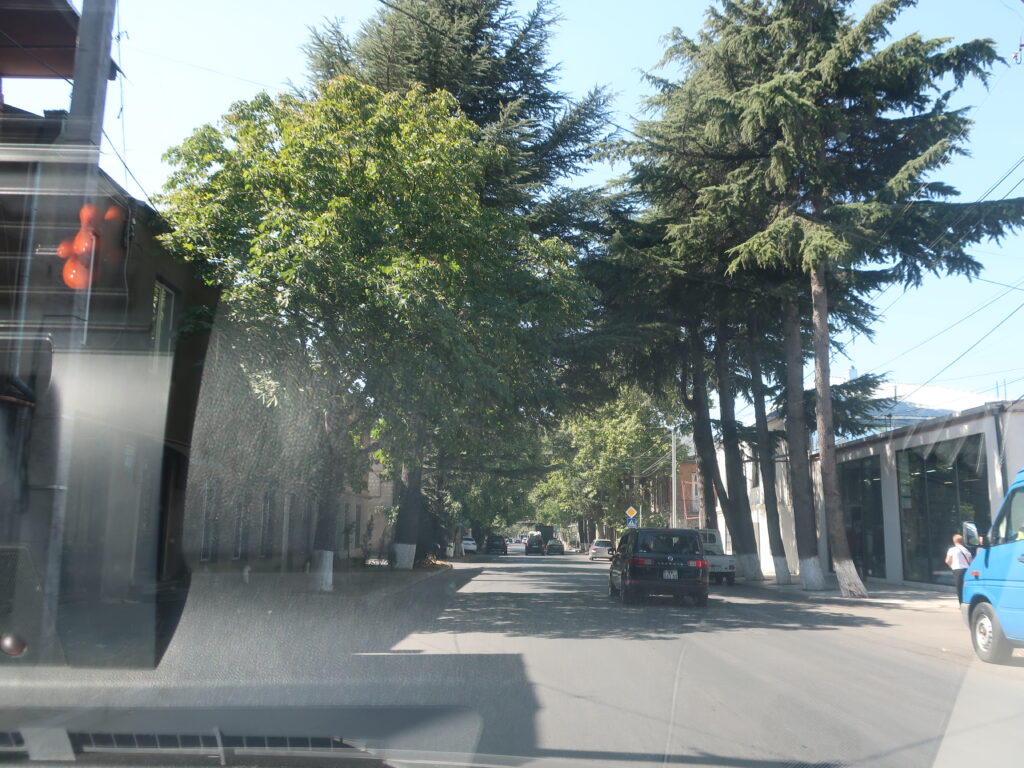
Finally, we arrived at the town of Gori. Our guide laughed and said, "No one is as bad at crossing the road as the residents of Gori," and it was true that many people seemed to cross the road without paying attention to the cars. This is indeed the former "town of the hail mongers.
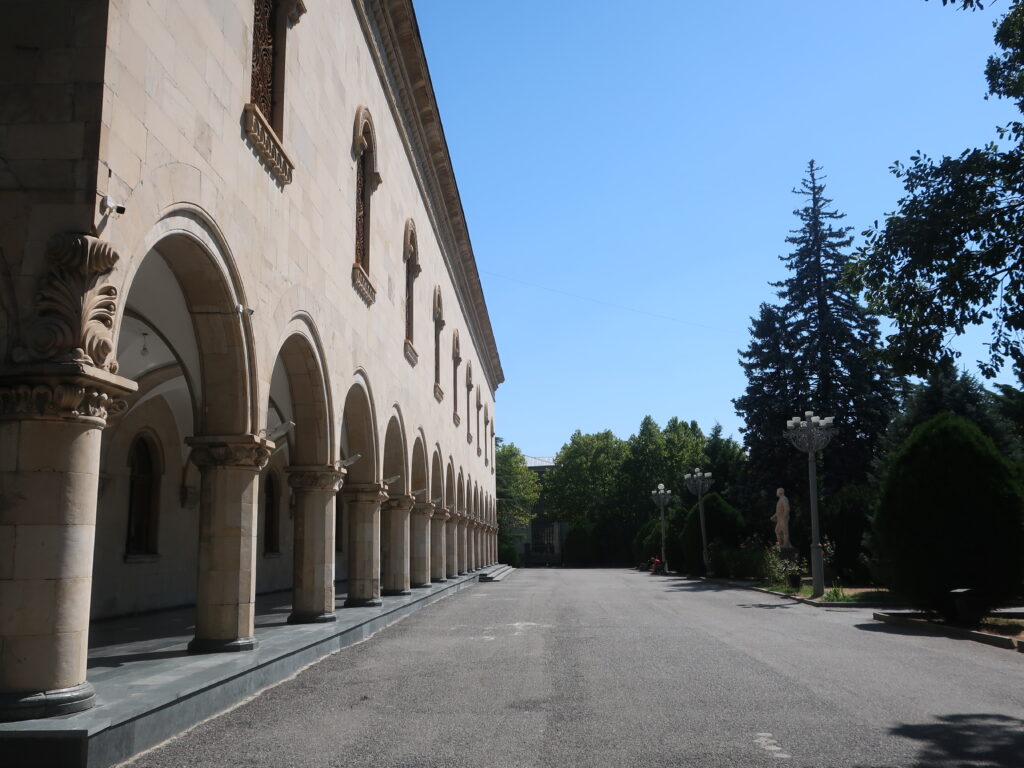
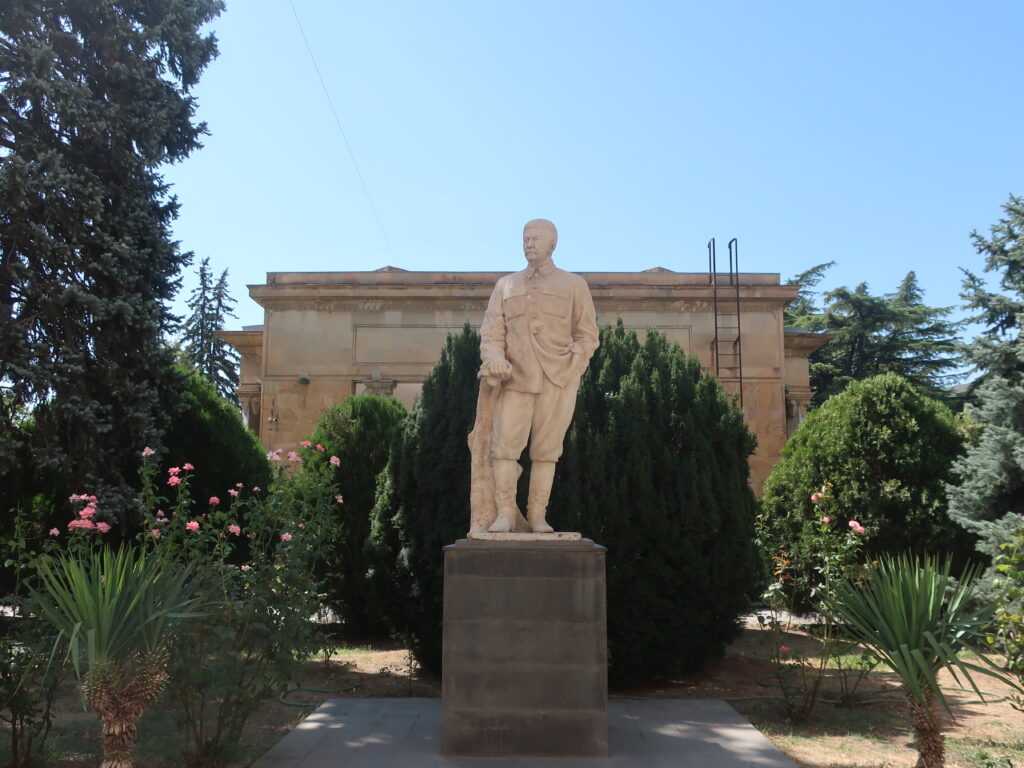
We arrived at the Stalin Museum. A statue of Stalin stood in front of the entrance. This is the Stalin Museum. Even before entering the museum, I could feel the atmosphere of admiration for Stalin.
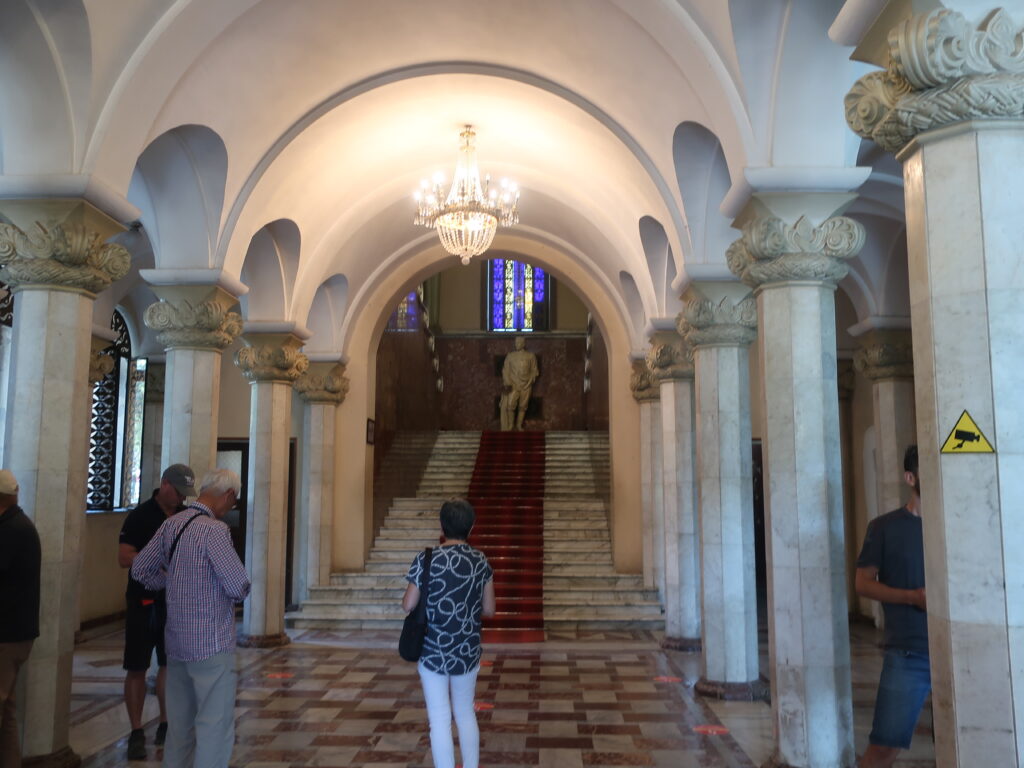
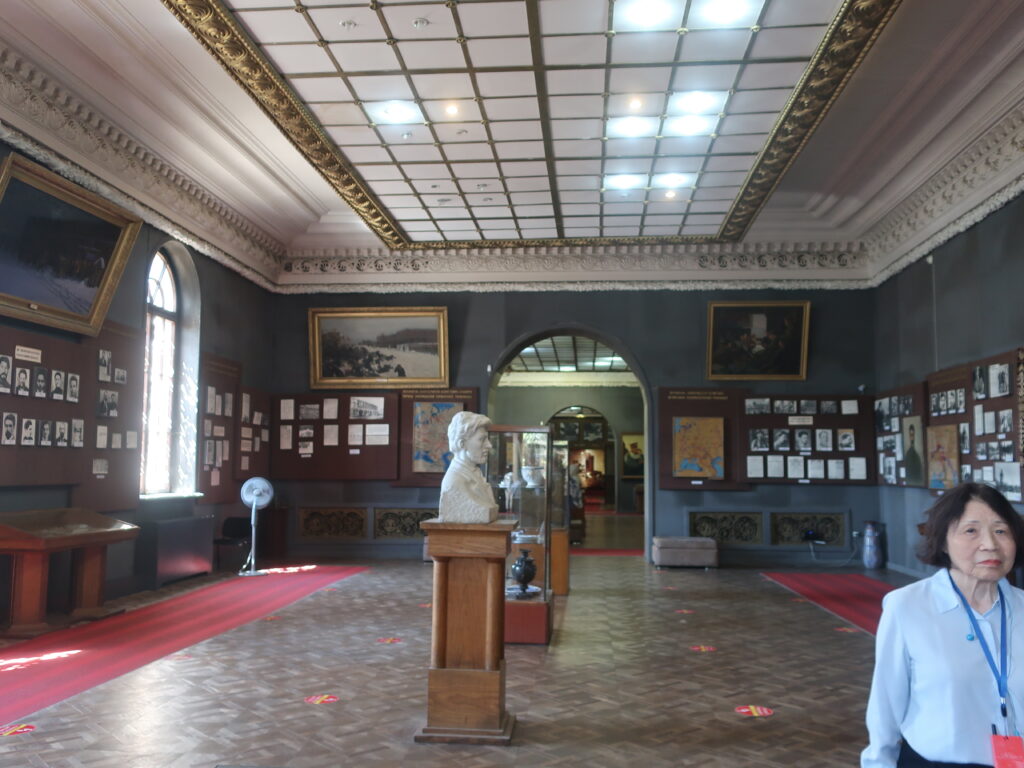
Upon entering the museum, one is immediately surprised to find that the interior is more magnificent than one had expected.
Moreover, the exhibits inside were surprisingly extensive.
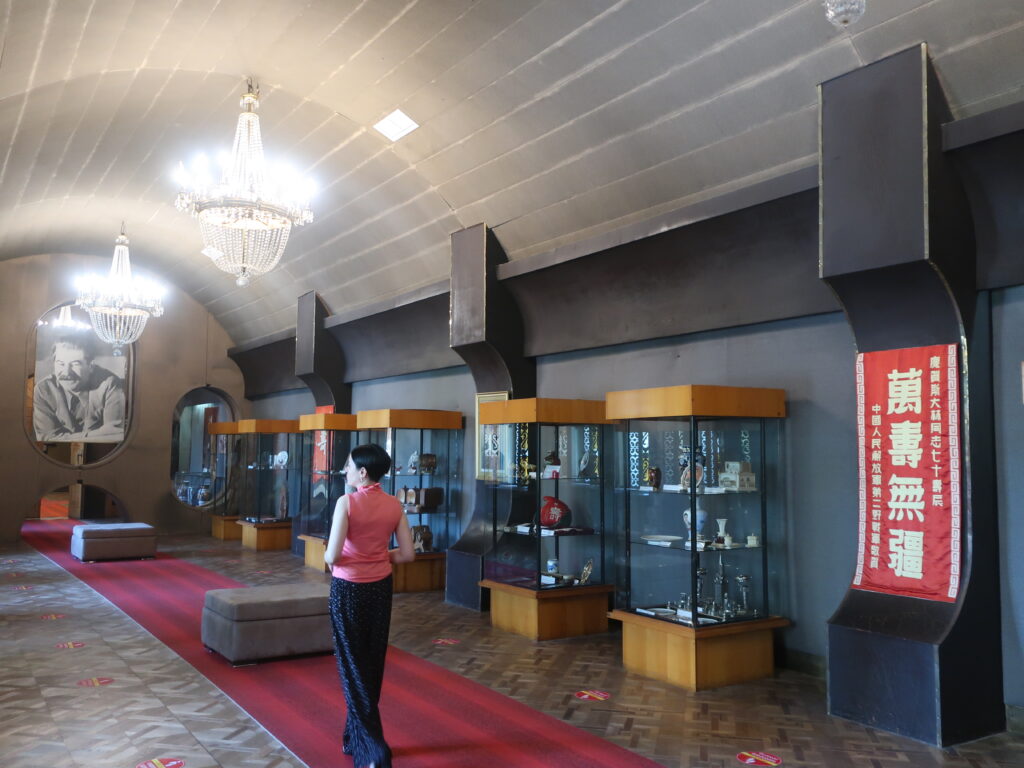
And the guide was much younger than I had expected. We, the visitors, were explained by the guide in this photo.
According to previous information, I had heard that the guide of this museum is an aunt who loves Stalin and talks about her love for him passionately, but apparently, she is not the one who is in charge this time. I had hoped to hear the Stalin-loving aunt speak, but the woman who was in charge this time was extremely cool. She explained the history of Stalin without any hesitation. I did not feel an atmosphere of ardent love for Stalin.
This woman is probably not yet 40 years old. I wonder if her senses are different from those of the generation who knew the Soviet era in its present form.
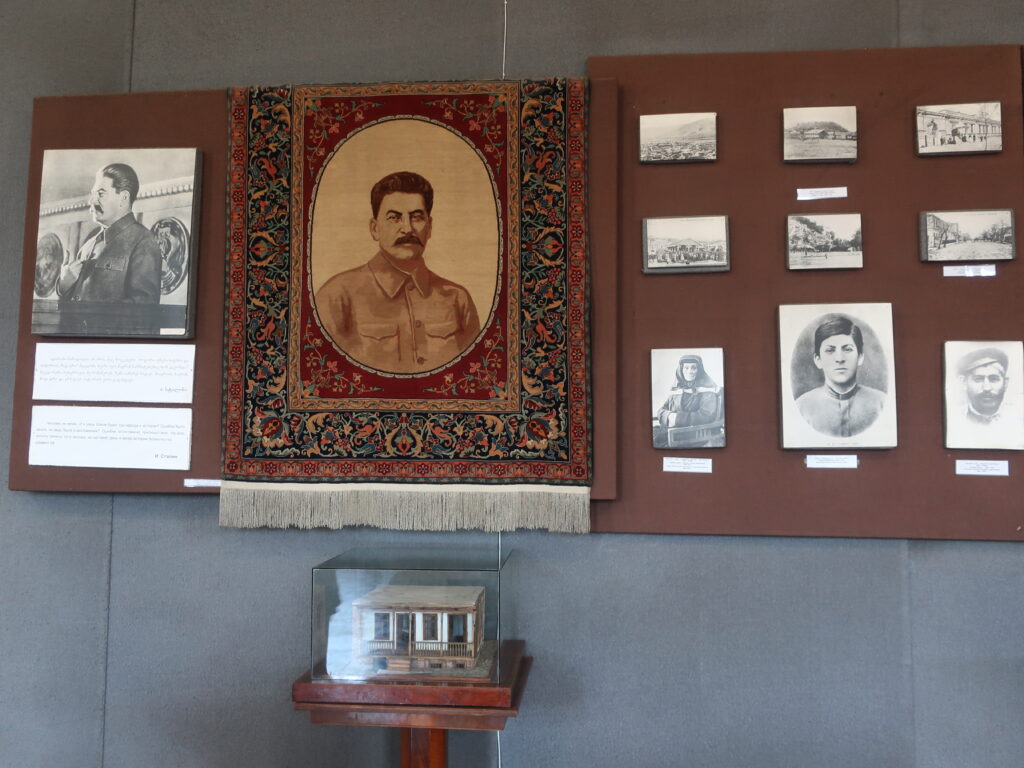
Still, I was surprised at how well this museum is organized.
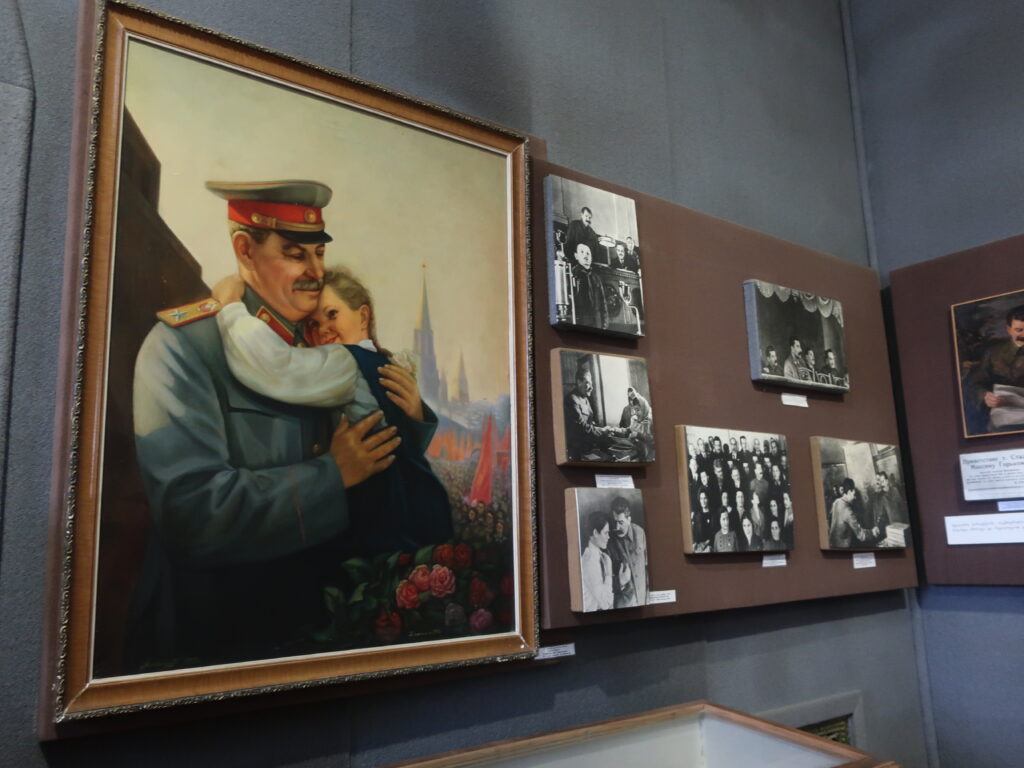
And as I was looking at this painting, it occurred to me.A "joint illusion."The words "I'm sorry, I'm sorry, I'm sorry" came to mind.
If you were here and saw an exhibit that celebrated Stalin's greatness, that would give you the feeling that you can't go wrong if you follow Stalin.
The former Soviet Union did this with overwhelming quantity and energy in all phases.
Follow this man and the world will be a better place!"
Behold! Stalin holding a child in his arms!"
Behold! Stalin, who praises the workers!"
'Behold! Stalin leading the war to victory!"
'Yes,' he said! This is the man who will bring glory to Russia! He is the only one who can do it! He is our leader!"
At the time, this was seriously believed by the entire nation as a whole. They were living a created reality, a fiction. (Not to mention what happened to those who did not believe)
But we cannot laugh at the Soviet Union as it once was. We are still living a joint illusion. We too are now living a fiction created on top of reality.
We live in the "everyday norm," but are the standards of value there really self-evident? What is good and what is bad? Where is the meaning of life?
Perhaps these things are just something that someone has made up. And we believe it as a matter of course.
How is this different from the Soviet Union?
Even in the Soviet era, people promoted what was good and what was bad, and what a "good person" should be. People believed in this and lived by it.
No, no, you might think that such coercion does not exist in Japan today.
But is this really so? The fear of peer pressure and rumor society in Japan may have become especially apparent with the Corona disaster. For peer pressure to arise, there must be a "rightness" that says, "This is the way it should be. If one does something that deviates from what the majority thinks is right, he or she will be attacked as "evil.
So where did this "rightness" come from?
When you think about it, you see a terrible problem that is not straightforward.
We can never laugh at the Soviet Union. I felt that fear in this museum.
be unbroken
Next Article.
Click here to read the previous article.
Related Articles











